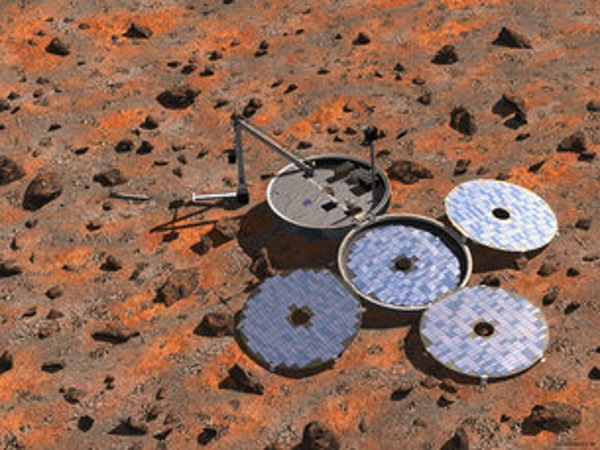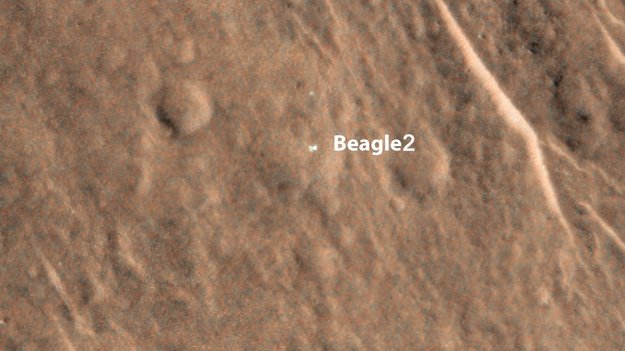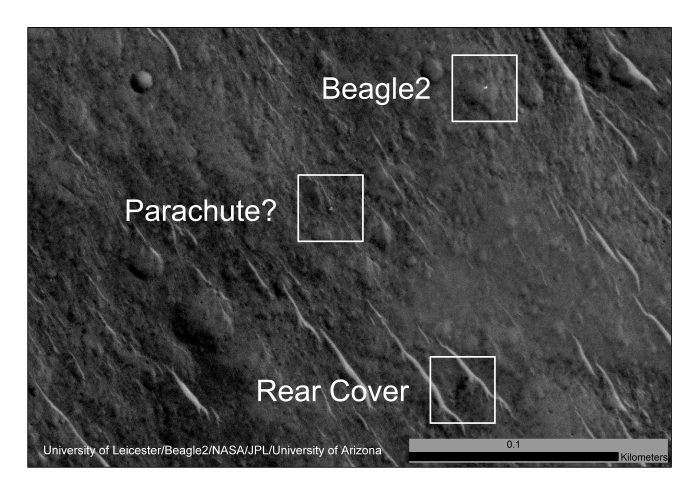In December of 2003, the UK-led Beagle-2 Mars lander hopped a ride on the European Space Agency’s Mars Express mission. After its departure, the rover got lost somewhere on Mars.
 Artist's illustration of the Beagle-2.
Artist's illustration of the Beagle-2.
Now, 12 years later, it has been spotted by a NASA orbiter.
The Beagle-2, the UK’s first mission to another planet, was never heard from after its scheduled touchdown and searches over the years by Mars Express and NASA’s Mars Odyssey mission were unsuccessful.
 Beagle-2 spotted in this photo.
Beagle-2 spotted in this photo.
“Not knowing what happened to Beagle-2 remained a nagging worry. Understanding now that Beagle-2 made it all the way down to the surface is excellent news,” said Rudolf Schmidt, ESA’s Mars Express project manager at the time of launch.
What made the search most challenging was the Beagle-2’s size. At less than six-feet-long when fully deployed, it was right at the limit of the resolution of cameras in orbit around Mars.
The lander was identified in images taken by the high-resolution camera on NASA’s Mars Reconnaissance Orbiter. It was spotted partially deployed on the surface proving that the entry, descent and landing sequence that was planned worked and Beagle-2 did successfully land on December 25, 2003.
When Mars Express operations team at ESA’s Space Operations Center in Germany worked with members of the Beagle-2 team to scan the images, they identified potential counterparts to Beagle-2 in the expected landing area of Isidis Planitia.
The images show an object with size, shape and features consistent with Beagle-2 and its landing components that lie within three miles of its expected landing area.
The partial deployment explains why the Beagle-2 team never received any signals from the lander. In order to properly transmit data and receive commands from Earth, it was required that the Beagle-2 fully deploy all of its solar panels in order to expose the radio antenna.
Since the antenna is covered, there is no possibility of ever reviving the Beagle-2 and recovering data.
Despite Beagle-2’s failure, Europe will continue its exploration of Mars. In 2016 ESA’s ExoMars Trace Gas Orbiter and Entry and Descent and Landing Demonstrator will launch, followed by the ExoMars rover in 2018.
For now, at least the mystery is solved.
Images and story via the European Space Agency.
Advertisement
Learn more about Electronic Products Magazine





